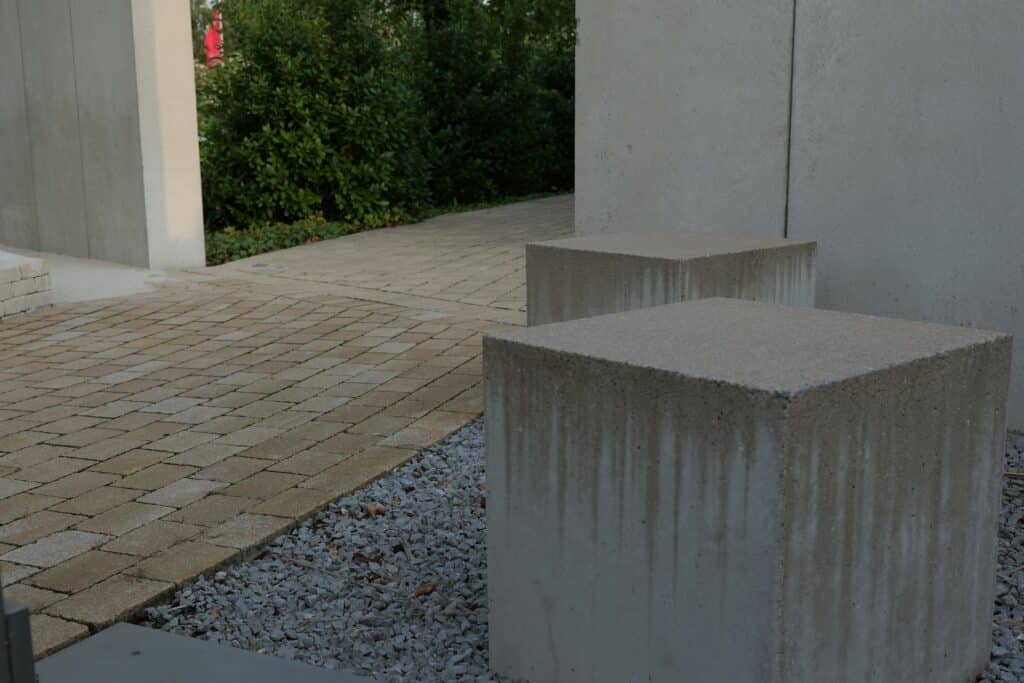Concrete slabs are a popular choice for foundations, driveways, patios, and sidewalks. But how long do concrete slabs reliably last? The lifespan on concrete slabs varies based on several factors. This article will serve as a full guide to concrete slab durability and longevity in Cambridge. Keep reading to learn how long concrete slabs can last.
Average Lifespan of Concrete Slabs in Cambridge, Ontario
When accounting for Cambridge, Ontario weather conditions, concrete slabs typically have a lifespan of 30-40 years.
However, with regular maintenance and ideal weather conditions, the maximum lifespan of concrete can be up to 100 years. Factors such as the quality of the concrete mix and the installation techniques used play a huge role in determining how long your concrete slab will last.
What Affects Concrete Lifespan?
- Quality of Materials: The type and quality of concrete mix used during installation makes a big difference. Higher-quality concrete mixes, which include durable aggregates and appropriate additives, are more resilient.
- Installation Techniques: Proper installation is crucial for the longevity of a concrete slab. Correct thickness, reinforcement (like rebar or mesh), and curing methods greatly impact durability.
- Weather Conditions: Cambridge experiences a range of weather conditions, including cold winters with freeze-thaw cycles, heavy rainfall, and humidity. This environment will cause cracking and damage if the concrete isn’t properly protected or maintained.
- Soil Conditions: The underlying soil quality and stability has an effect on the concrete’s longevity. Expansive soils or poorly compacted ground will cause shifting and cracking over time.
- Usage and Load: The amount of weight or stress placed on the slab also affects its lifespan. For instance, concrete driveways designed to handle heavier vehicles will need more reinforcement compared to a simple patio.
- Maintenance: Regular maintenance, including sealing cracks, cleaning surfaces, and applying sealants, will prevent premature deterioration and extend the life of the concrete.

When to Replace Concrete Slabs
Since the concrete’s lifespan can vary so widely, knowing when to replace your concrete slab can be tricky. Here are indicators that your concrete slabs need replacing:
- Significant Cracking: Minor cracks are normal, but big cracks or a large amount of them are a sign that replacement is needed (especially if the cracks are affecting the structural integrity of the slab).
- Settlement Issues: If the slab is shifting, sinking, or raising unevenly, the area could be considered a hazard for injury or further concrete damage. This will require a quick replacement. It likely has something to do with the soil underneath the slabs.
- Surface Spalling: If you see the top layer of the slab flaking or chipping away, that means that the material is deteriorating. This would require a replacement to avoid further damage.
- Pitting or Scaling: These surface issues often arise from de-icing chemicals or improper curing. If they are extensive, replacement may be more cost-effective than repair.
- Water Drainage Problems: If the slab causes pooling water or drainage issues, replacing it is necessary to ensure proper water flow and prevent future issues.
Whether you’re considering a new concrete slab installation or replacing your old concrete slabs, C&T Landscaping is Cambridge’s trusted concrete slab installation company. We’ll ensure a precise installation that preserves your concrete slabs and extends their lifespan.

